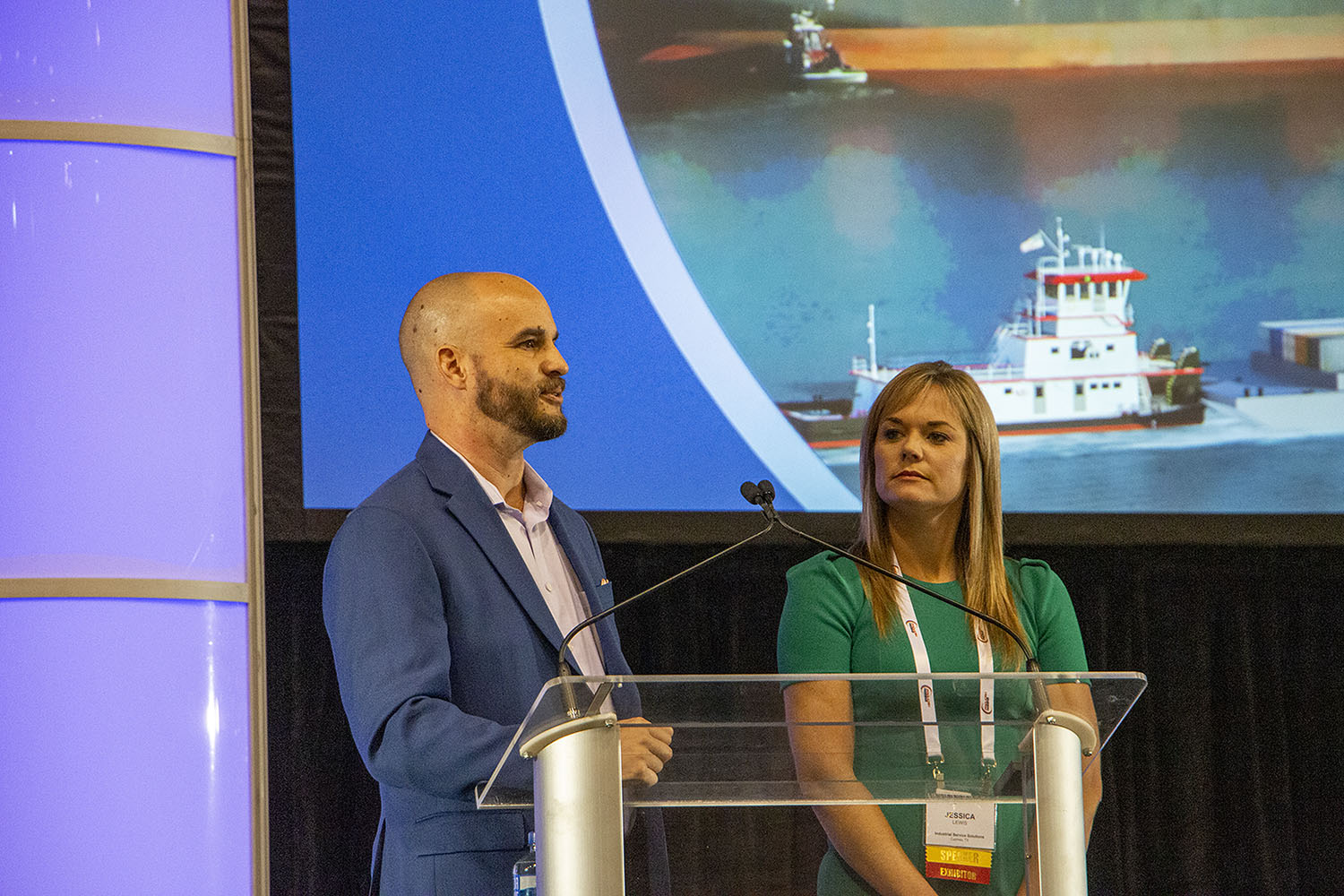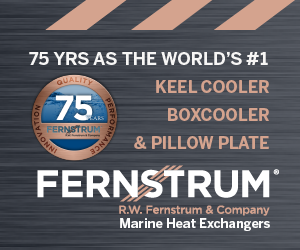One of the panel discussions provoking the most questions at the recently concluded Inland Marine Expo in St. Louis was a panel on electric and hybrid technologies. Joshua Sebastian, vice president of The Shearer Group, led the panel discussing the business case for why towing companies should consider electric and hybrid propulsion alternatives.
Jonathan Braun, CEO of Zeeboat LLC (who joined the panel remotely) began by noting that the International Maritime Organization has said maritime trade is responsible for 3 percent of global carbon emissions and wants to reduce those emissions by 50 percent by 2050. There are zero-emissions electric and hybrid solutions available right now for some ports and vessels.
Zeeboat, founded by investors “fascinated by shipping,” Braun said, is “dedicated to furthering the decarbonization of marine transport” by building and delivering electric towboats. Zeeboat has produced a video on the Vimeo platform titled “Decarbonizing Short Sea Shipping.” The partners hope to begin cutting steel in the third quarter of this year and to have the boats available by the end of 2024. The boats’ batteries would be recharged by shoreside facilities.
To that end, it seeks to work with design partners like The Shearer Group and ports to apply existing electrification solutions to vessels and port technology. “I came to realize that this is not a science project, but a green project that makes great pocketbook sense,” Braun said. “We put our money where our mouths are, and we hope to continue doing that.”
Jessica Lewis, director of business development for Industrial Service Solutions, one of Zeeboat’s partners, described how four fully electric towboats displacing 7,000 twenty-foot equivalent units (TEUs or containers) a year from trucks, operating within a 20-mile truck route, could save more than $78 million a year in (truck) fuel costs, for a net-zero carbon solution where 64 mariners could replace 5,400 truckers.
Sebastian said when Lewis approached him nine months ago, his first reaction was, “That won’t work.” Most battery-powered vessels today are ferries on fixed routes, where battery technology makes a lot of economic sense. But he quickly became convinced it would work for workboats as well, he said. Lewis said the batteries are designed for a 10-year lifespan. Swapping battery cells will be simpler than swinging an engine. “You’ll just swap out a module and continue operating.”
Answering a question from the audience, Sebastian said that while the potential of electric technology is almost limitless, effective vessel design depends on the mission and range of a particular vessel. Is it a fleet or harbor boat? What is its operational profile? Features like battery sizes and umbilical strategies will be tailored to the answers to these questions. “Data analysis is part of the engineering,” he said.
Lewis also agreed that data analysis is key. If you would ever consider an electric or hybrid vessel, the time to start collecting data on your vessel operations is now, she said. “There will probably never be one solution for all. Establish a decarbonization strategy now.”
She said the movement toward decarbonization is being driven by corporate boards and companies rather than by regulation at this point. “Industry leaders will be at the head of the line for state and federal grants” for decarbonization when those become available. The Coast Guard is considering new propulsion options on a case-by-case basis as they are introduced, with safety the No. 1 consideration.
Caption for photo: Josh Sebastian of The Shearer Group Inc. with Jessica Lewis of Industrial Service Solutions. (Photo by John Shoulberg)




